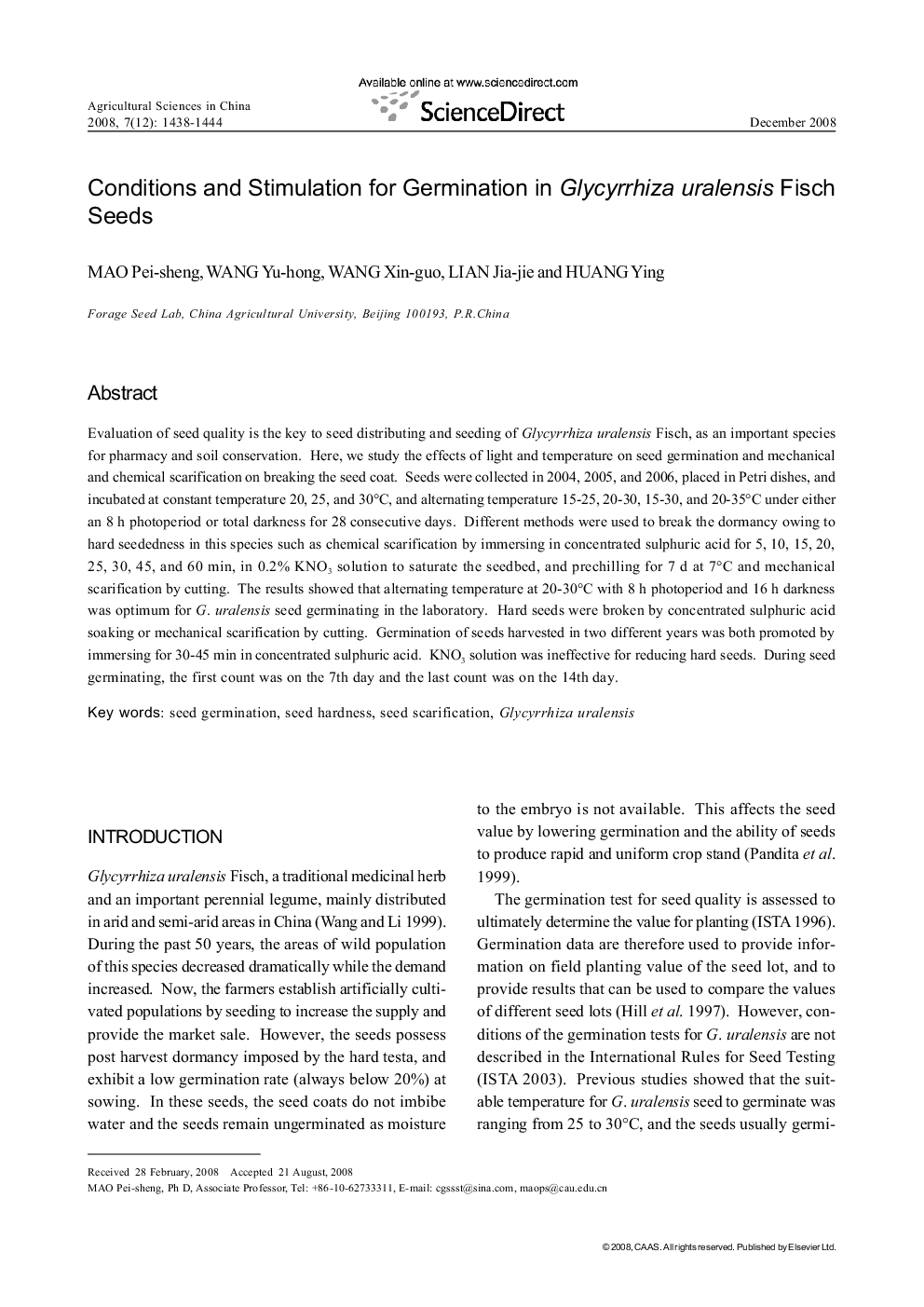| Article ID | Journal | Published Year | Pages | File Type |
|---|---|---|---|---|
| 4490503 | Agricultural Sciences in China | 2008 | 7 Pages |
Evaluation of seed quality is the key to seed distributing and seeding of Glycyrrhiza uralensis Fisch, as an important species for pharmacy and soil conservation. Here, we study the effects of light and temperature on seed germination and mechanical and chemical scarification on breaking the seed coat. Seeds were collected in 2004, 2005, and 2006, placed in Petri dishes, and incubated at constant temperature 20, 25, and 30°C, and alternating temperature 15-25, 20-30, 15-30, and 20-35°C under either an 8 h photoperiod or total darkness for 28 consecutive days. Different methods were used to break the dormancy owing to hard seededness in this species such as chemical scarification by immersing in concentrated sulphuric acid for 5, 10, 15, 20, 25, 30, 45, and 60 min, in 0.2% KNO3 solution to saturate the seedbed, and prechilling for 7 d at 7°C and mechanical scarification by cutting. The results showed that alternating temperature at 20-30°C with 8 h photoperiod and 16 h darkness was optimum for G. uralensis seed germinating in the laboratory. Hard seeds were broken by concentrated sulphuric acid soaking or mechanical scarification by cutting. Germination of seeds harvested in two different years was both promoted by immersing for 30-45 min in concentrated sulphuric acid. KNO3 solution was ineffective for reducing hard seeds. During seed germinating, the first count was on the 7th day and the last count was on the 14th day.
